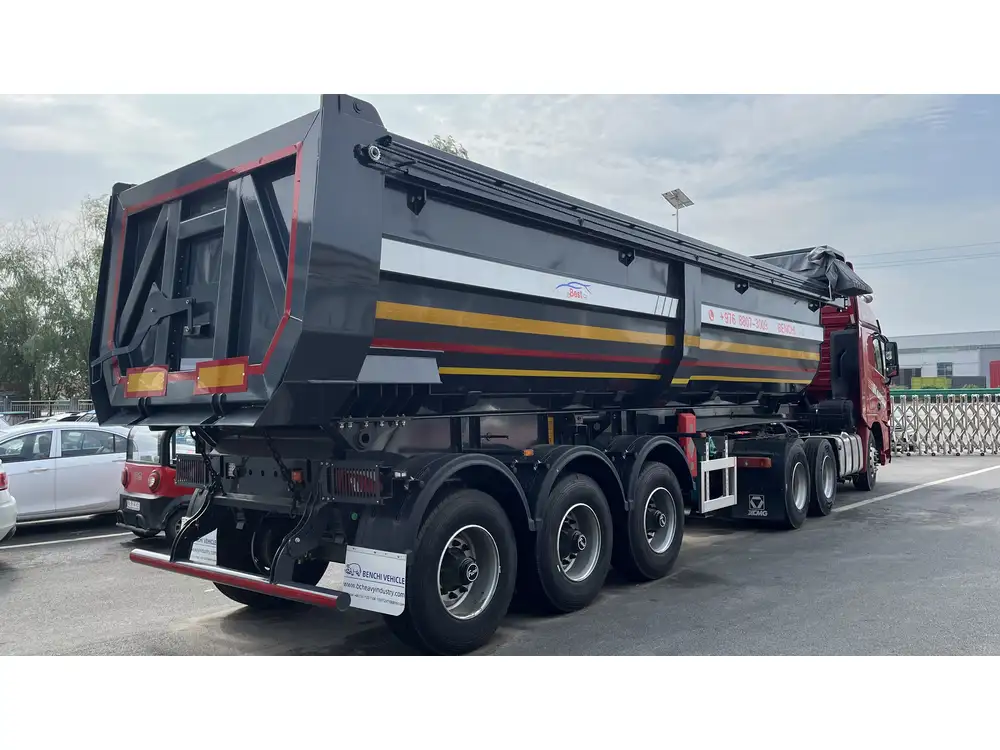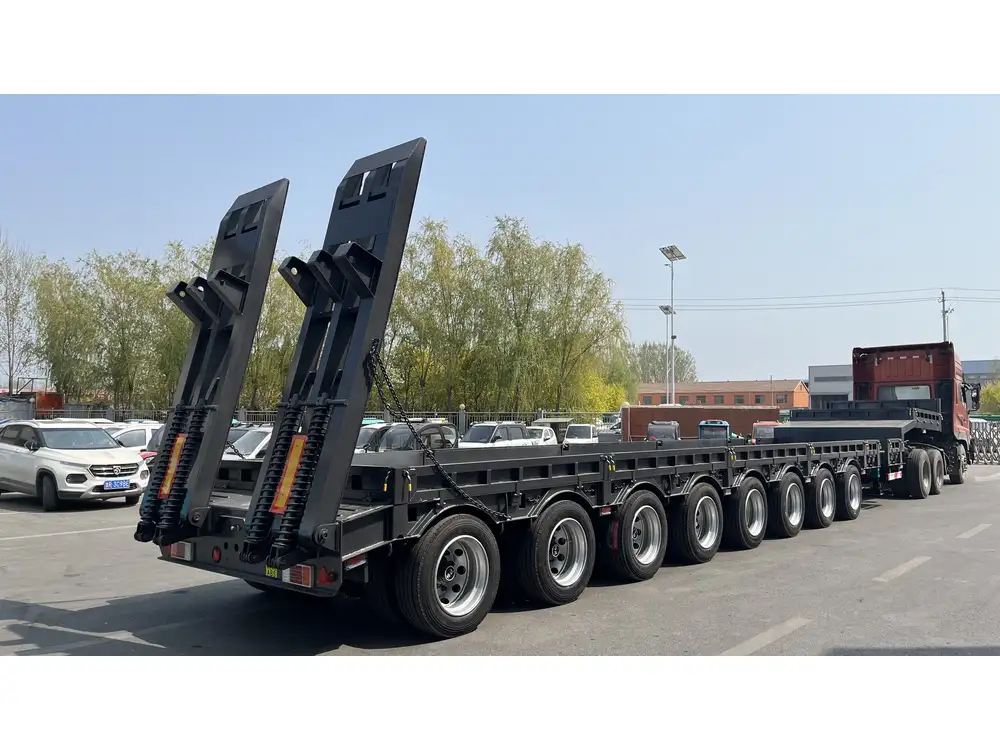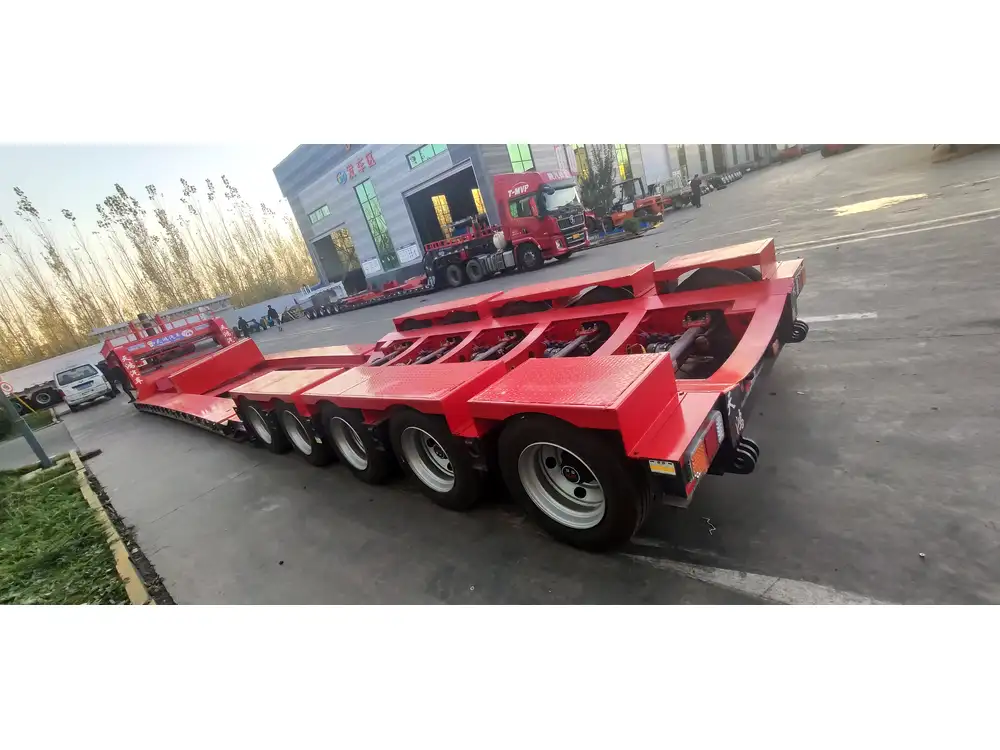When it comes to transportation and logistics, selecting the appropriate trailer is a pivotal decision for manufacturers, contractors, and even hobbyists alike. Among the myriad of options available, the 5×12 flatbed trailer stands out as a versatile choice favored for both personal and commercial use. However, a critical question often arises: how much can a 5×12 flatbed trailer hold? To answer this question, we will delve into various aspects, including load capacity, the materials used, safety considerations, and real-world applications that underscore the functionality of this essential piece of equipment.
Load Capacity Defined: An Overview
Load capacity refers to the maximum weight a trailer can safely carry without jeopardizing structural integrity or compromising safety standards. For a typical 5×12 flatbed trailer, the load capacity is predominantly influenced by various factors, including:
| Factor | Influence on Capacity |
|---|---|
| Materials | The quality of the steel or aluminum used in construction. |
| Design | Reinforcement features, weight distribution designs. |
| Axle Configuration | The number of axles and their rating significantly impact capacity. |
| Tire Rating | The load rating of the tires directly affects how much weight can be safely transferred. |
Typical Load Capacity of a 5×12 Flatbed Trailer
Most 5×12 flatbed trailers fall within the 1,500 to 3,000-pound range for load capacity when properly configured. However, to ensure safety and longevity, it is paramount to refer to the manufacturer’s specifications as there can be variations based on design and additional features such as reinforced frames or specialized axles.

The Importance of Gross Vehicle Weight Rating (GVWR)
Gross Vehicle Weight Rating (GVWR) is a critical term that complements load capacity. It defines the maximum loaded weight of the trailer including its own weight. Here’s a breakdown for clarity:
- Tare Weight: This is the weight of the trailer itself when empty.
- Payload Capacity: This indicates the maximum weight the trailer can carry without exceeding the GVWR.
Example Calculation
Let’s consider a scenario with a 5×12 flatbed trailer that has the following specifications:
- Tare Weight: 1,200 lbs
- GVWR: 3,000 lbs
The payload capacity can be calculated as follows:
[ \text{Payload Capacity} = \text{GVWR} – \text{Tare Weight} ] [ \text{Payload Capacity} = 3,000 lbs – 1,200 lbs = 1,800 lbs ]This means that the trailer can legally support a maximum load of 1,800 pounds.
Compliance and Regulations
It’s essential to be aware of local regulations regarding trailer usage, as different states may impose various laws concerning load limits, especially when it comes to weight distribution.

Safety Considerations for Loading
Ensuring the safety of the load is as beneficial as knowing the maximum weight a 5×12 flatbed trailer can carry. Here are some vital safety tips to consider:
| Safety Measure | Description |
|---|---|
| Distributing Weight Evenly | Properly center the weight to prevent swaying or tipping. |
| Securing Loads | Utilize ratchet straps, chains, or cargo nets to secure items and prevent shifting. |
| Checking Tire Pressure | Ensure the trailer’s tires are inflated to the manufacturer’s recommended pressure to support optimal load capacity. |
| Regular Maintenance | Inspect the trailer periodically for signs of wear and tear to guarantee safe operation. |
Weight Distribution Techniques
Effective weight distribution can significantly enhance the safety of your hauling. Here are some methods:
- Front-Load Distribution: Placing heavier items at the front close to the axle.
- Back-Load Distribution: Offsetting lighter items in the back may help with center of gravity but can lead to trailer sag.
- Side-to-Side Balance: Making sure that the load is balanced from left to right to avoid tipping during turns.
Real-World Applications for 5×12 Flatbed Trailers
The flexibility and load capacity of a 5×12 flatbed trailer make it a popular choice across various industries. Here are some notable applications:

Construction and Hauling
Contractors and construction managers favor these trailers for transporting tools, machinery components, and even small construction vehicles like mini-excavators. They can typically reload and unload materials safely, ensuring efficiency on job sites.
Landscaping
For landscapers, these trailers are invaluable for hauling:
- Soil and Mulch: Easily transport bulk soil for planting needs.
- Plants and Shrubs: Move large quantities of greenery, ensuring they arrive fresh and undamaged.
- Landscaping Equipment: Efficient transport of mowers, trimmers, and other equipment necessary for operations.
Leisure and Hobbies
In the recreational sector, flatbed trailers serve various hobbies such as:
- ATV Transport: Perfect for hauling all-terrain vehicles for trips.
- Camping Gear: Carrying camping trailers and outdoor equipment for weekend getaways.

Comparison with Other Trailer Sizes
While a 5×12 flatbed trailer holds a reputable spot in the market, it’s also beneficial to understand how it compares to other trailer sizes in terms of capacity and versatility.
| Trailer Size | Typical Load Capacity | Best For |
|---|---|---|
| 4×8 | Up to 1,500 lbs | Small loads, personal use |
| 5×10 | Up to 2,000 lbs | Light hauling, medium-sized cargo |
| 6×12 | Up to 3,000 lbs | Heavy-duty use, larger equipment transport |
| 7×16 | Up to 5,000 lbs | Commercial hauling, multiple vehicles and gear |
Choosing the Right Flatbed Trailer for Your Needs
Selecting the right trailer depends on various factors, including the specific requirements of your projects and intended usage. Here are some considerations to ensure you make an informed decision:
Usage Frequency
For users who need a trailer for frequent transportation tasks, investing in higher-quality trailers with reinforced materials and advanced features may yield better returns over time.

Type of Cargo
Understanding the type of materials you intend to haul is crucial. Delicate equipment may require specialized features such as anti-skid surfaces, while construction materials might necessitate higher weight capacity.
Budget
Lastly, aligning your budget with your operational needs is vital. While higher capacity trailers offer versatility, the initial cost must be justified by their usability in your tasks.
Conclusion
In summary, a 5×12 flatbed trailer can typically hold anywhere from 1,500 to 3,000 pounds, depending on its construction and intended use. Understanding the mechanics of load capacity alongside practical applications, safety considerations, and real-world uses can help buyers make smarter purchases tailored to their needs. It’s not solely about maximizing capacity but ensuring safe, effective, and compliant hauling for various projects. Whether you’re a contractor, landscaper, or recreational user, investing in the right trailer leads to enhanced efficiency and peace of mind on the road.



